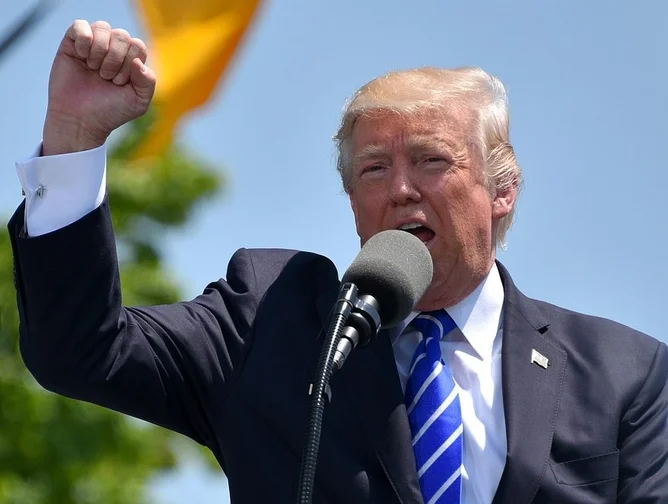Experts from Ivalua and FourKites assess what Donald Trump’s re-election as US President could mean for the supply chains propelling global trade.
It’s official: Donald Trump has been re-elected as President of the United States after being given what he calls an “unprecedented mandate” by the American people.
Trump, who will become just the second US President to serve non-consecutive terms in office, has entered a two-month transition period, ending with his inauguration in January.
On the campaign trail, Trump made a range of promises – but how many will he keep and what will they mean for the supply chains that propel global trade?
Trump’s love of tariffs
Trump has previously called tariffs “the most beautiful word in the dictionary” and “the greatest thing ever invented”.
In a bid to grow the US economy and protect jobs, he has pledged to tax all goods coming into the country, with imports from China likely to be targeted most heavily.
“Under a second Trump term, we would likely see a greater escalation of tariffs and ‘Buy American’ provisions as part of a broader industrial policy agenda,” explains Alex Saric, CMO at Ivalua, a leader in procurement, spend management and supplier management.
“At the same time, existing ESG regulations could face rollbacks, though major corporations may continue ESG practices voluntarily to meet consumer and investor expectations or maintain compliance with international standards.”
Alex says organisations should prepare for the possibility of either nearshoring or onshoring operations, factoring in evolving ‘made in USA’ thresholds and the potential exclusion of nations like China.
He adds: “Ultimately, supply chain resilience will hinge on the ability to nimbly adapt strategies in response to shifting tariffs, trade agreements and market conditions.”
Concerns for manufacturing
Dan Abramson, SVP of Growth Markets at the supply chain visibility specialist, FourKites, highlights that Trump’s proposed tariffs could result in a “complex transformation” for the manufacturing sector – especially with potential industrial action on the horizon.
“The timing couldn’t be more challenging,” he continues. “Companies rushing to beat new tariffs will compete for already-strained logistics capacity just as East Coast ports face possible labour disruptions in January 2025.”
“Different manufacturing subsectors will experience wildly different outcomes. Electronics makers face potentially painful component shortages, while chemical companies might actually benefit from reshoring.
“Small manufacturers will struggle with the transition costs, while larger players can use this as a catalyst to rebuild their supply networks. The biggest winners won’t be those who simply move production, but those who use this moment to fundamentally redesign operations with more flexibility and redundancy built in.”
Shifting supply chains
The US is the largest importer of goods in the world, according to the Office of the United States Trade Representative.
US goods imports from the rest of the world totalled a staggering US$3.2tn in 2022, up 14.6% on 2021.
China was, by a fair distance, the top supplier of goods to the US, accounting for 16.5% of total goods imports. Some of the goods making their way most frequently from China to the US include smartphones, digital automation systems, toys and video game consoles.
A significant volume of goods also enters the US from Mexico (US$454.8bn), Canada (US$436.6bn), Japan (US$148.1bn) and Germany (US$146.6bn). Goods imports from the EU’s 27 member states totalled US$553.3bn.
Trump’s threatened tariffs of up to 60% on China could very likely prompt businesses to reconsider the location of various elements of their supply chains.
Alex warns that taking such steps would be far simpler for some firms than others.
“The feasibility of shifting portions of supply chains away from China in response to increased tariffs heavily depends on the specific commodities involved,” he notes.
“For some goods and materials – such as rare earth minerals, which predominantly come from China – relocating would be highly challenging. In other cases, nearshoring to Mexico or elsewhere may be possible.
“However, limited supplier options could drive up costs, at least until new sources ramp up production, given the long investment and extraction timelines for certain commodities.”
Ivalua’s marketing chief goes on to point out that a key obstacle is the existence of well-established industrial clusters that have formed efficient supply chain hubs, such as auto manufacturing in Detroit. China has developed similar concentrations for several industries.
“Replicating these integrated ecosystems in new markets won’t happen overnight,” Alex concludes. “In the interim, companies would face higher costs, greater disruption risks and increased greenhouse gas emissions from lengthier transportation routes throughout their redistributed supply networks.
“Initially, businesses that haven’t diversified their supplier base will struggle to identify new vendors and navigate the risks of onboarding unfamiliar supply chains. Maintaining flexibility and carefully evaluating sourcing options will be crucial for companies navigating this upheaval.”



